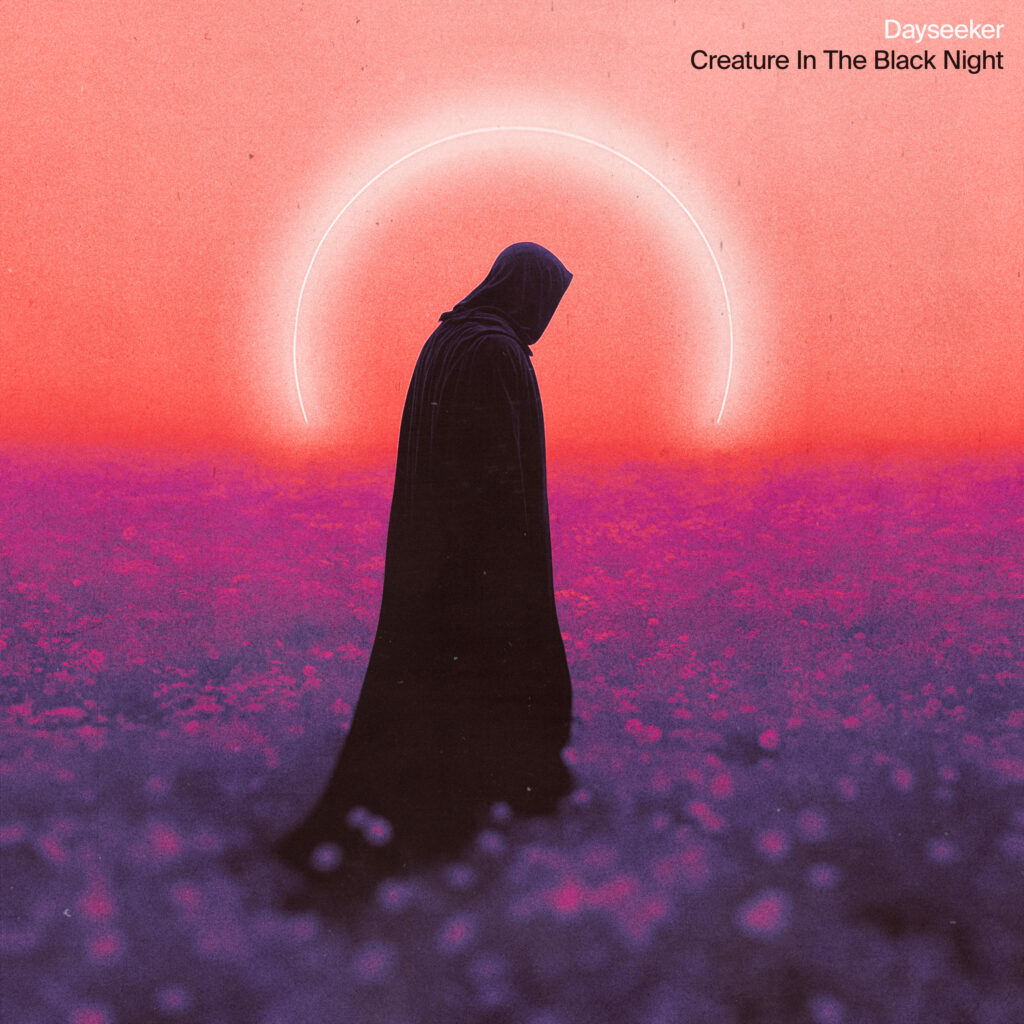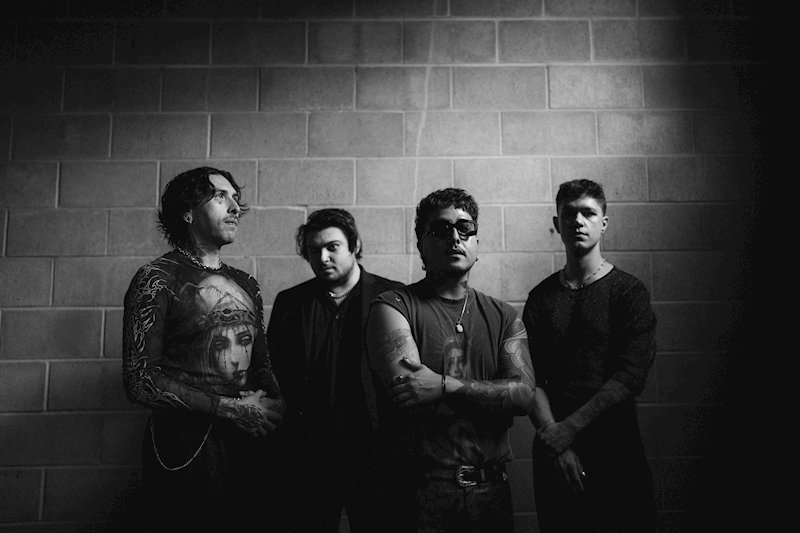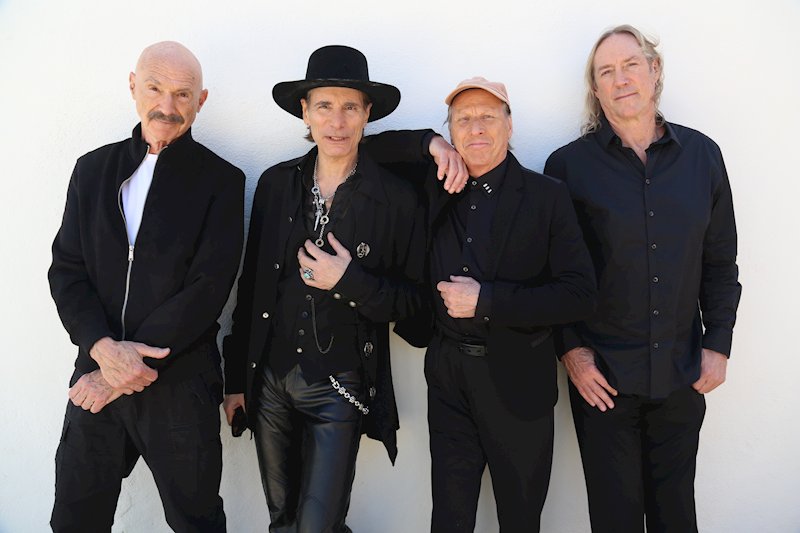“Dancing with the devil in the pale moonlight…”
With that haunting invitation, Dayseeker drag listeners into the abyss — not with shock or spectacle, but with the seductive pull of sorrow turned art. Creature in the Black Night is less an album than a séance of sound: cinematic, brooding, and unflinchingly human.
For more than a decade, the Southern California quartet have been refining their craft — trading the jagged edges of post-hardcore for a form of “sad rock” that’s heavier than pop yet more emotionally naked than metalcore. 2019’s Sleeptalk and 2022’s Dark Sun marked that evolution, each album peeling back more layers of grief and self-reflection. But Creature in the Black Night is where those ghosts come to rest — or maybe, where they finally start to speak.
Produced by Daniel Braunstein (Spiritbox, Silent Planet) and mixed by Zakk Cervini (Bring Me the Horizon, Blink-182), Creature is Dayseeker’s most deliberate, immersive, and thematically unified work to date. Every track feels like a chapter in a gothic diary: love as addiction, self-preservation as haunting, and pain as ritual. The horror imagery — Grim Reaper iconography, cinematic shadows, and whispers from the dark — isn’t just aesthetic; it’s metaphor.
From confession to confrontation
The album opens with Pale Moonlight, a spectral confessional where Rory Rodriguez wrestles with toxic desire and self-destruction.
“Made a deal with the devil / Put me down on my knees…”
It’s an addict’s prayer disguised as a love song, and it sets the emotional temperature for what follows. The track’s blend of silky synth textures and bone-deep heaviness reflects Dayseeker’s skill at walking the line between beauty and despair — something fans instantly recognized in the cinematic video directed by Jensen Noen.
If Pale Moonlight is the temptation, Creature in the Black Night is the fall. The title track surges with primal energy — synthwave ambiance meets teeth-bared aggression — as Rodriguez howls through the pull of inner darkness. It’s the band’s most complete statement in years: sleek yet dangerous, eerie yet cathartic.
Shapeshift and Soulburn keep that duality alive, balancing moody restraint with bursts of violence. The screams hit harder this time, as if Dayseeker are exorcising the notion that they’ve gone soft. Meanwhile, Cemetery Blues and The Living Dead dive into numbness and detachment, turning emotional paralysis into poetry. When Rodriguez sings about “the living dead,” it’s not about dying — it’s about feeling nothing at all.
Embracing the darkness
What elevates Creature in the Black Night is its clarity of intent. While Dark Sun felt like grief rendered in grayscale, this record bleeds in full color — deep reds, blues, and blacks. Every song sounds touched by moonlight and menace, unified by a “horror-film” atmosphere that never loses its humanity.
Even the production mirrors that internal battle: cinematic layers giving way to raw, exposed vocals. The push and pull between restraint and rage — between confession and catharsis — defines the album’s heartbeat.
Dayseeker’s longtime fans may find this record heavier, sharper, and less polished than expected. But that’s exactly the point. Creature in the Black Night isn’t about mourning — it’s about survival. It’s the sound of a band no longer afraid of their shadows, reclaiming them instead.
Final thoughts
Creature in the Black Night cements Dayseeker as one of modern rock’s most emotionally literate and sonically ambitious acts. It’s a love letter to the lonely and the lost, scored in minor keys and midnight tones. For every moment of pain, there’s equal power — for every ghost, a flicker of life.
Sad rock? Maybe. But few bands make sadness sound this alive.

I’m Drew, the founder and editor of Front of the Stage. I have a strong love for music and photography, which started at a very young age. There’s just something I love about experiencing live music and capturing memories that will last a lifetime, and that’s how Front of the Stage came to be.





